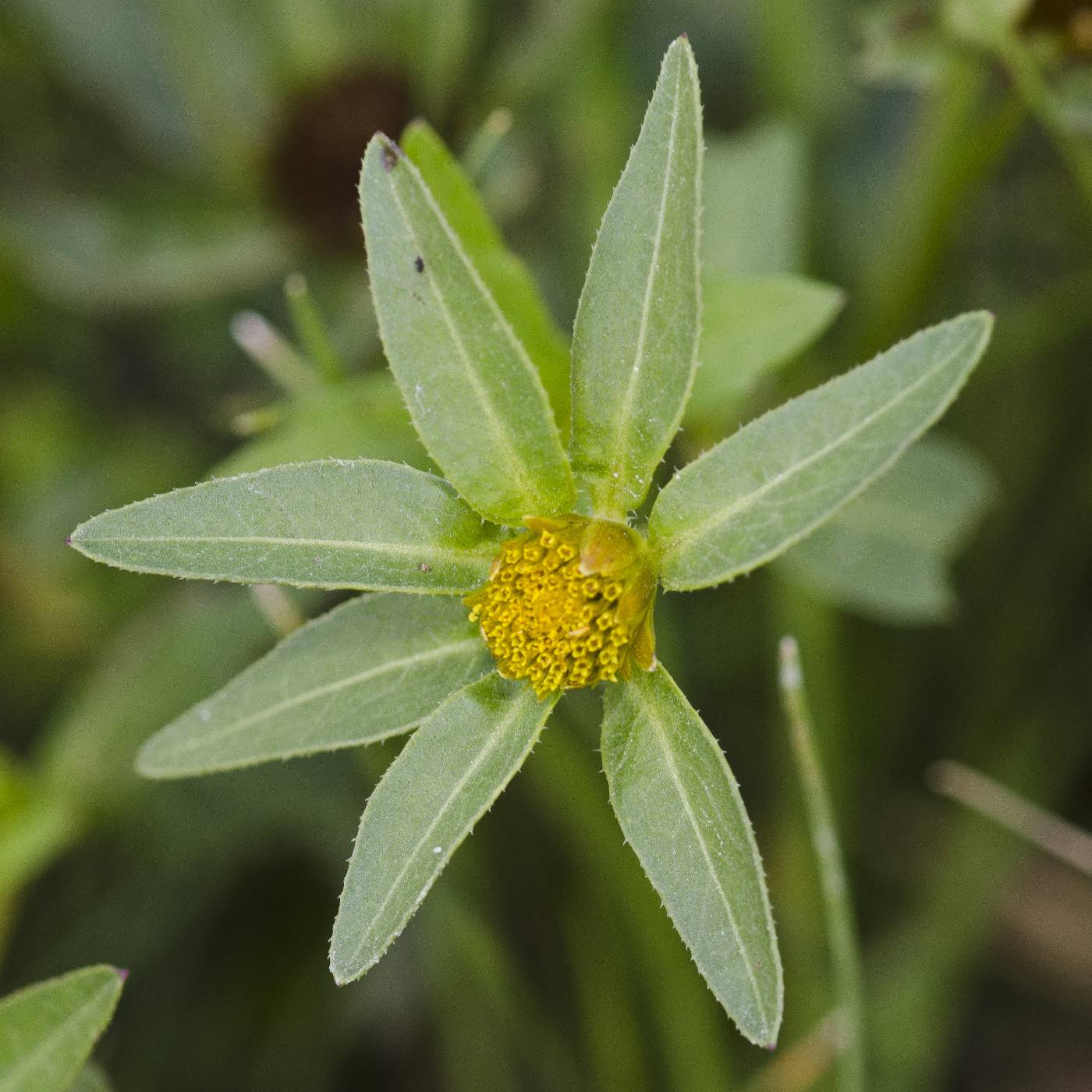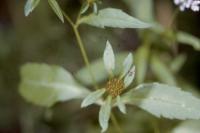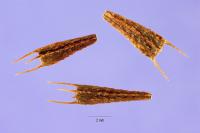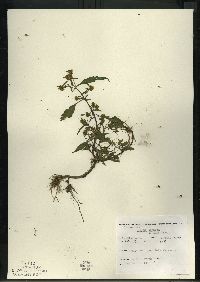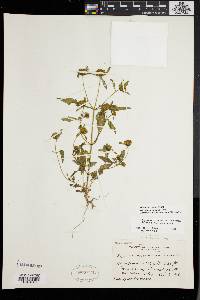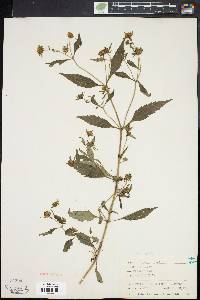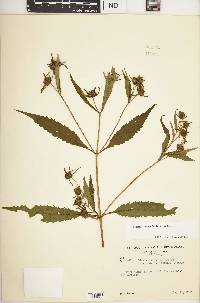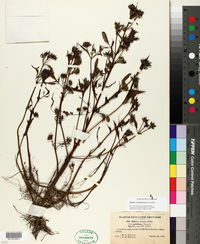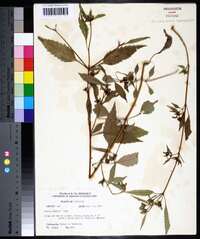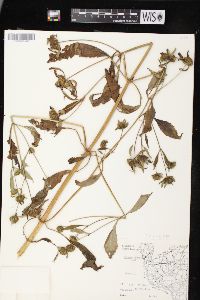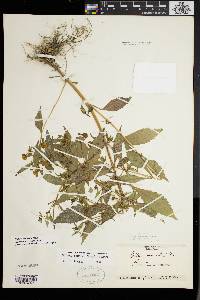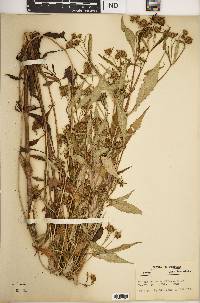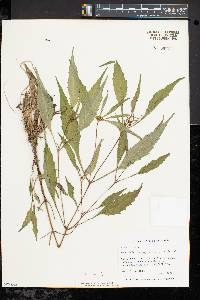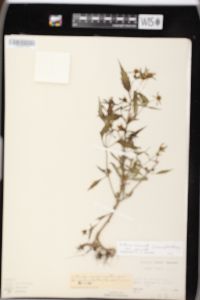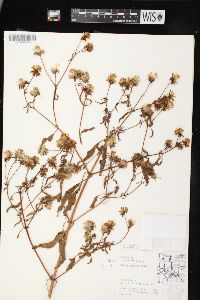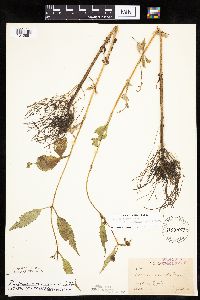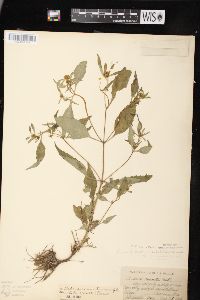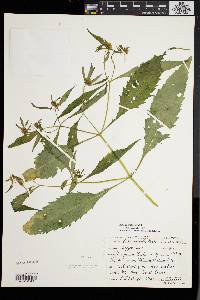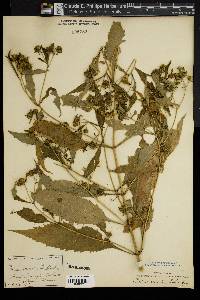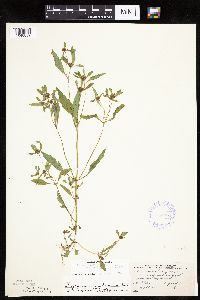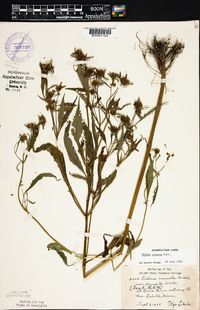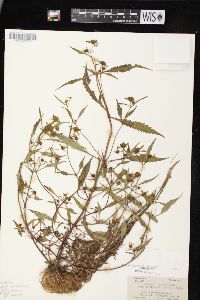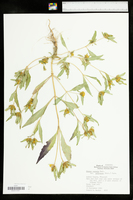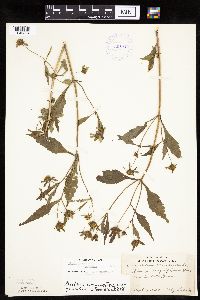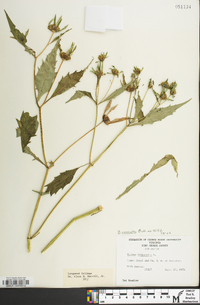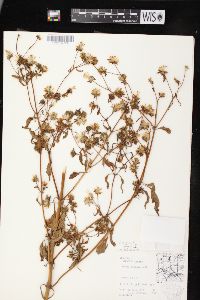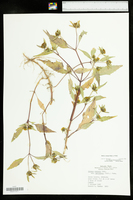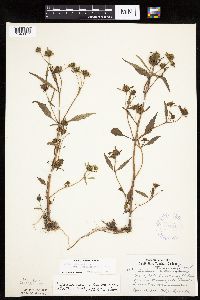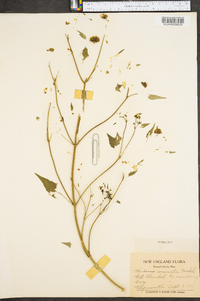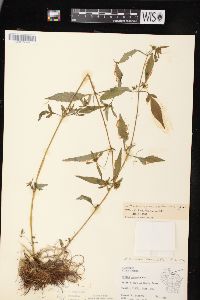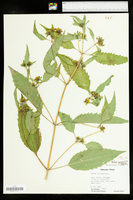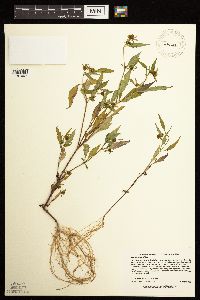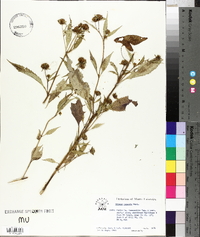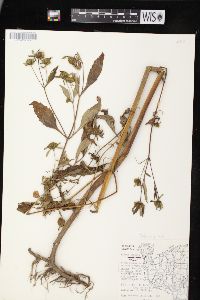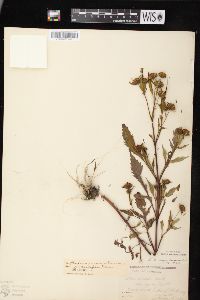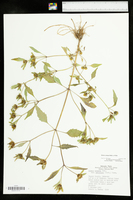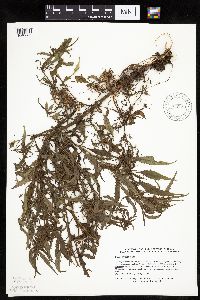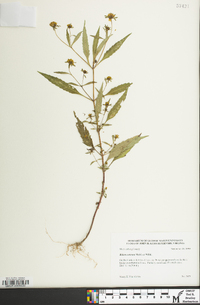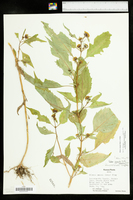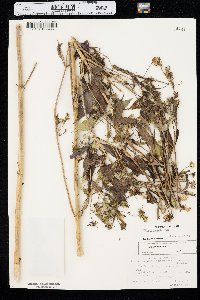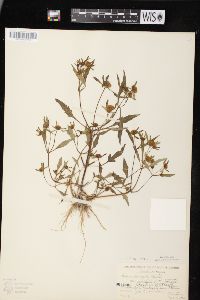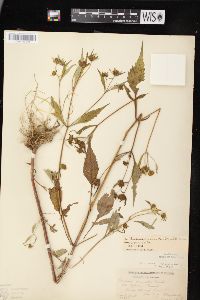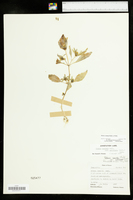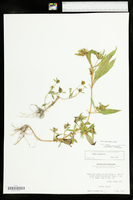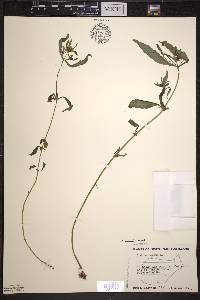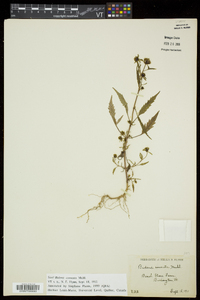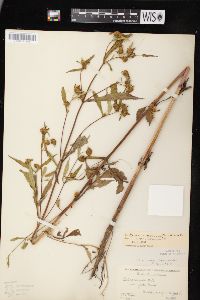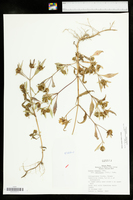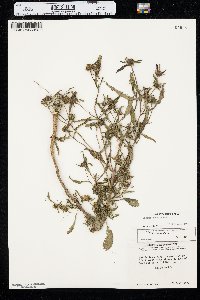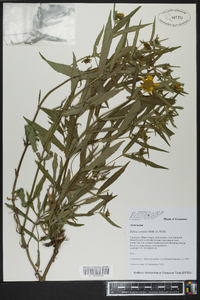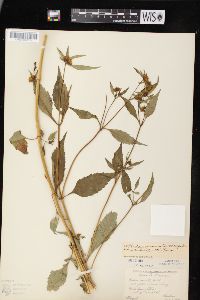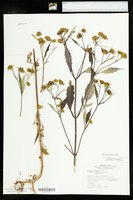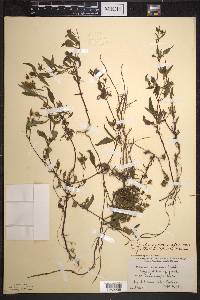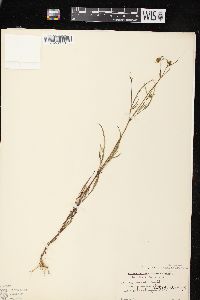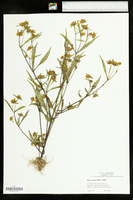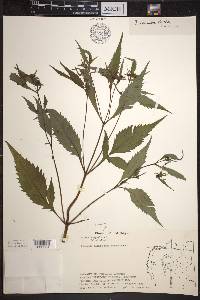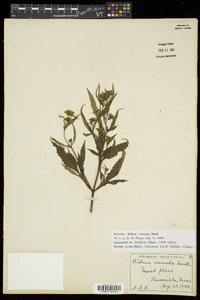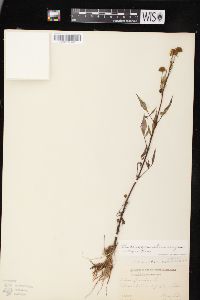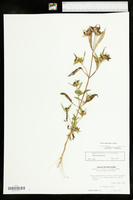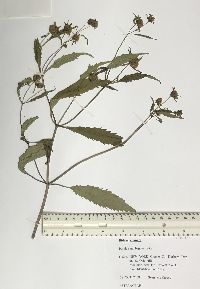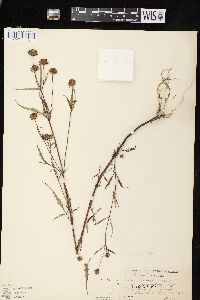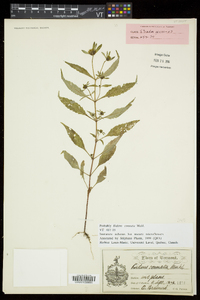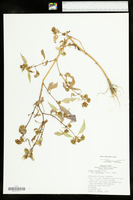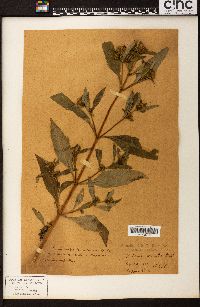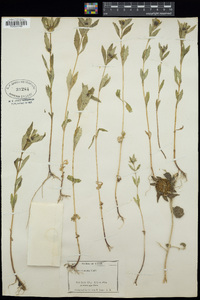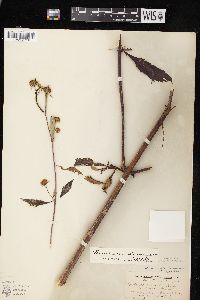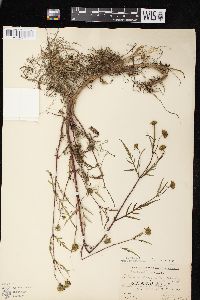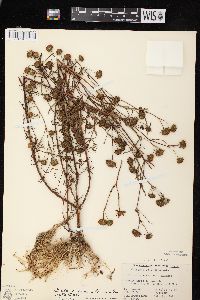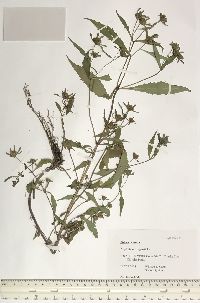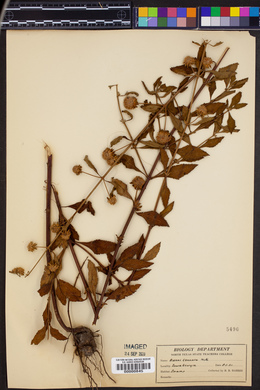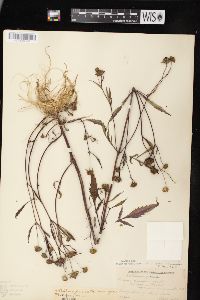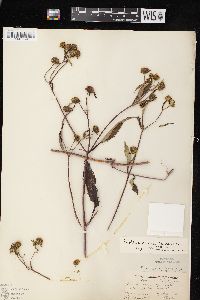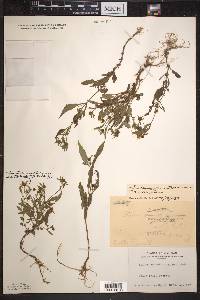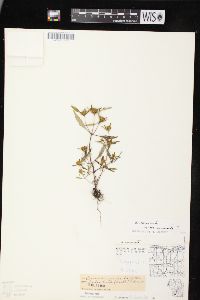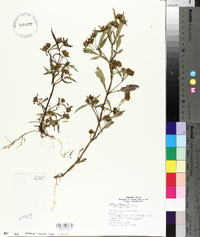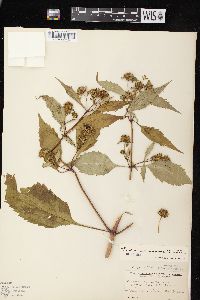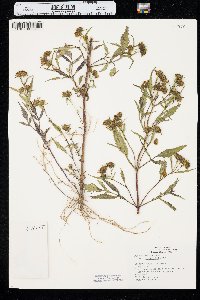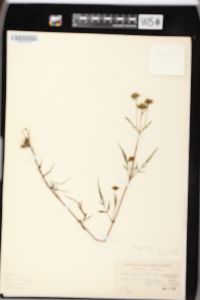
|
|
|
|
Family: Asteraceae
Purplestem Beggarticks
[Bidens connata f. anomala (Farw.) E. G. Voss, moreBidens connata var. fultior , Bidens sandbergii Rydb.] |
Annuals, (5-)25-150(-200) cm. Leaves: sessile or petioles (± winged) 5-15(-35+) mm; blades ± elliptic to lanceolate, (20-)40-100(-200+) × 10-30(-70) mm, sometimes laciniately 1-pinnatisect with 1-4+ lobes near bases, bases cuneate, margins entire or dentate to serrate, usually ciliate, apices attenuate, faces glabrous or hirtellous. Heads borne singly or in 2s or 3s. Peduncles 10-35(-80) mm. Calyculi of 2-6+ spreading or ascending, lanceolate, linear, oblanceolate, oblong, or spatulate, ± foliaceous bractlets or bracts 10-25(-35+) mm, margins (entire or serrate) usually ciliate, abaxial faces hispidulous near bases, distally glabrous. Involucres campanulate to hemispheric or broader, (4-)6-12 × (3-)6-9(-15+) mm. Phyllaries (6-)8(-9), elliptic to oblong or ovate, (4-)5-6(-12) mm. Ray florets usually 0, sometimes 1-5+; laminae yellowish, 4-8 mm. Disc florets (5-)20-40(-60+); corollas pale yellow to orange, 2-3 mm (± abruptly ampliate, anthers usually dark, blackish). Cypselae blackish to purplish or brown, usually (at least inner) ± 4-angled, usually cuneate to linear, sometimes ± obpyramidal, outer (3-)4-7 mm, inner (4-)5-8 mm, margins proximally antrorsely to patently, distally retrorsely, barbed, apices ± truncate to concave, faces usually strongly 1-nerved, usually tuberculate, glabrous or setulose; pappi 0, or of (1-)2-4(-6), ± erect to spreading, antrorsely or retrorsely barbed awns (0.2-)2-5 mm. 2n = 48. Flowering Aug-Oct. Marshes and other wet sites; 10-1700 m; N.B., Nfld. and Labr. (Nfld.), N.S., Ont., P.E.I., Que.; Conn., Del., Ga., Ill., Ind., Iowa, Kans., Ky., Maine, Md., Mass., Mich., Minn., Mo., Mont., Nebr., N.H., N.J., N.Y., N.C., N.Dak., Ohio, Pa., R.I., S.C., S.Dak., Tenn., Va., W.Va., Wis.; Europe; Asia; n Africa; introduced in Pacific Islands, Australia. Bidens connata may be better treated as part of B. tripartita.
Purplestem b.-t. Annual 1-20 dm, glabrous or nearly so; stem green to purplish; lvs simple, serrate, often some of them deeply 3(-7)-cleft, 3-15 cm, to 4 cm wide (exclusive of the lobes), on evident, sometimes winged petioles to 3 cm; heads erect, discoid or with rays to ca 4 mm, rather broadly campanulate to hemispheric, at least the terminal one generally with more than 30 fls, the disk 8-20 mm wide; outer invol bracts 4-9, herbaceous, but not so large as in no. 4 [Bidens comosa (A. Gray) Wiegand]; disk-cors (4)5-lobed, orange-yellow; anthers shortly exserted; achenes 3-7 mm, cuneate or cuneate-obovate, compressed-quadrangular, with the midribs evident and raised at least distally (or the marginal ones flatter), the surface mostly tuberculate and rather sparsely bristly-strigose; pappus of (2-)4(-6) retrorsely (rarely antrorsely) barbed awns, the median ones generally shorter than the lateral; 2n=24, 48, 60. Wet waste places, widespread in c. and e. U.S. and adj. Can., w. to N.D., and Kans., s. to N.C. and Mo., and sporadically elsewhere. Aug.-Oct. Only with difficulty to be distinguished from the Eurasian B. tripartita L., with more consistently cleft lvs and mostly smoother, often flatter achenes. Gleason, Henry A. & Cronquist, Arthur J. 1991. Manual of vascular plants of northeastern United States and adjacent Canada. lxxv + 910 pp. ©The New York Botanical Garden. All rights reserved. Used by permission. From Flora of Indiana (1940) by Charles C. Deam The typical form of this species is apparently rare in Indiana. I have specimens from only Lagrange and Starke Counties. My specimens are from the moist, sandy shores of lakes. My [var. petiolata] plants are all from the lake area, although there are reports for it throughout the state. It is found mostly in wet places in woods, dried-up swamps and ponds, and less frequently on the borders of lakes and streams. It must be kept in mind that since the species of Bidens were not well separated by our older manuals, there were many wrong determinations of the species as now understood. ...... Indiana Coefficient of Conservatism: C = 2 Wetland Indicator Status: n/a |
This project was made possible in part by the Institute of Museum and Library Services [MG-70-19-0057-19].
Powered by Symbiota

